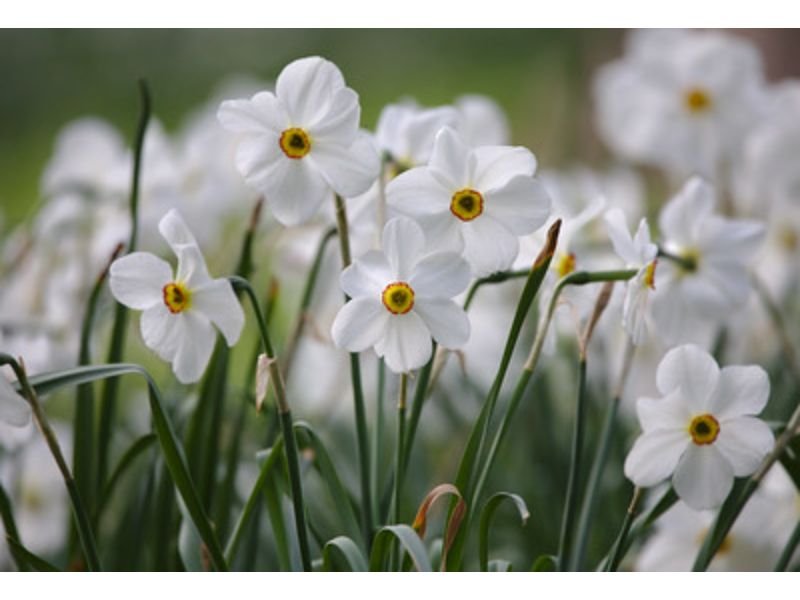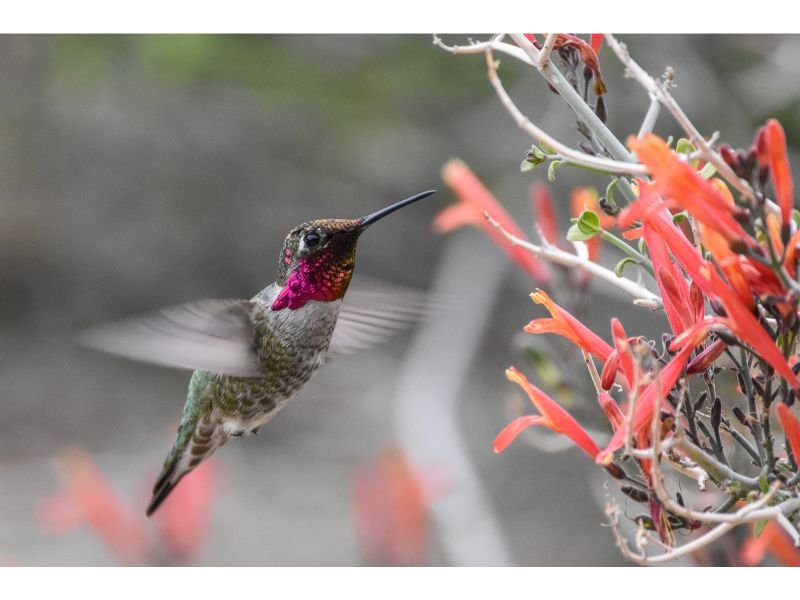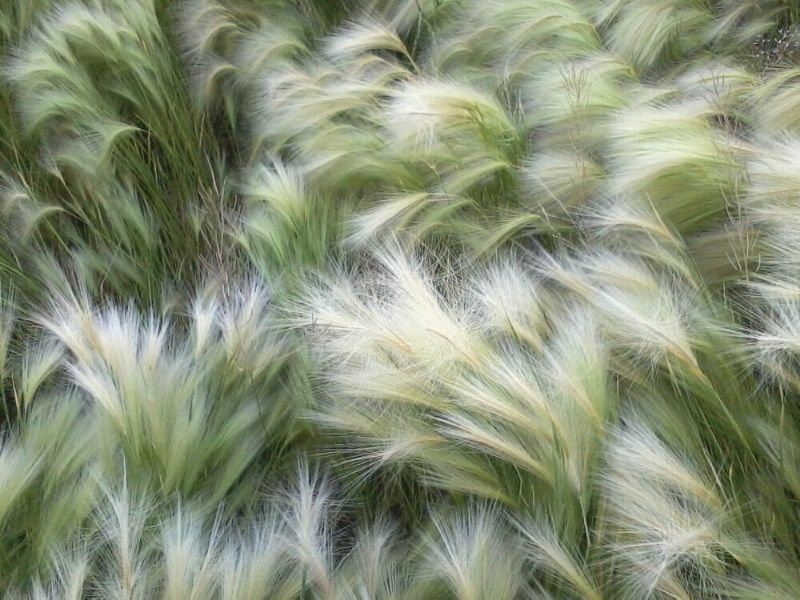Last updated on September 1st, 2023 at 02:58 am
What crop has purple flowers?
Crop that has purple flowers are lavender, mealy blue sage, purple echinacea or coneflower, tulips, ‘Purple Torch’ ajuga reptans, purple bee balm, Scottish heather, hyacinths, Japanese iris, ‘Blazing Stars’ liatris, Gulf muhly grass, creeping phlox, phacelia, and purple deadnettle.
Crop plants are cultivated plants that grow for consumption or simply as cut flowers and ornamental flowers. They usually grow in a massive area called cropland. We all know the most favored crops such as corn and sunflowers, but what about a crop that has purple flowers?
When we talk about this topic, purple crop flowers like phacelia, purple deadnettle, and henbit deadnettle–which are grown mainly for their color and as herb plants, may come first. But do you know there is more crop that has purple flowers? In this article, we will give you a few examples–who knows you can successfully master these purple crop flowers!
Table of Contents
The crop that has purple flowers.
Aside from consumption, cut flowers, and ornamental flowers, many other farmers grow plants for clothes material or livestock in their cropland as well. Depending on which flowers you are growing, growing a crop that has purple flowers could provide you with many advantages. You can name a few, for example, adding an aesthetic value to your land. As a plus addition, if you are living near an area where it’s flooded with tourists during high season, you can utilize your purple flowers cropland as a tourist attraction as well.
Here is the list of the crop with purple flowers:
1. Lavender
Scientific name: Lavandula angustifolia

When do you ask what farm crop has purple flowers? Then lavender may come first to most people’s minds. Lavender is a perennial shrub and edible flower from the mint or Lamiaceae Family. They’ve been cultivated for their attractive lavender-purple-colored, edible, and fragrant blooms. Lavender doesn’t need high maintenance and is also resistant to drought and heat. As a Mediterranean plant, they thrive well under direct full sun.
Lavender is classified as a crop due to its edible and fragrant purple flowers, making it a sought-after herb for culinary, medicinal, and aromatic purposes. Lavender might be the most familiar crop with purple flowers in day-to-day use.
2. Mealy Blue Sage
Scientific name: Salvia farinacea

The following crop that has purple flowers is mealy blue sage or commonly known as salvia. This annual and perennial herb plant shares a striking similarity to lavender when it comes to its looks. They both produce a group of small lavender blooms in an individual stalk that is attractive to animals like butterflies, bees, and hummingbirds. Apart from purple, mealy blue sage also produces bright blue blooms with a white center.
3. Purple Echinacea or Coneflower
Scientific name: Echinacea angustifolia

What crop has a purple flower and is known to cure cough? Purple echinacea is your answer. Echinacea is native to North America and has been cultivated as a part of traditional medicine among Native Americans. Furthermore, their purple, pink, or white aster-like petals, along with their yellow-orange centers, make echinacea also admired as a cut flower.
Purple echinacea is considered a crop due to its medicinal properties. Echinacea flowers are used in traditional Native American medicine for their potential immune-boosting qualities. The purple petals, along with their unique appearance, contribute to its status as a sought-after purple flower crop.
4. Tulips
Scientific name: Tulipa

Another crop that has purple flowers and is the national flower of Iran and Turkey is tulips. They are annual and perennial bulbous flowers that come in a wide variety of colors including purple, but not blue. Tulips create such a fantastic view, especially if you mass-growing them in a wide cropland area. They are edible but be aware that these gorgeous flowers contain low levels of toxins.
Tulips are cultivated as a crop with purple flowers blooms, enhancing the visual appeal of gardens, public spaces, and landscapes. They are often used in flower arrangements, bouquets, and ornamental displays, contributing to the horticultural industry.
5. ‘Purple Torch’ Ajuga Reptans
Scientific name: Ajuga reptans
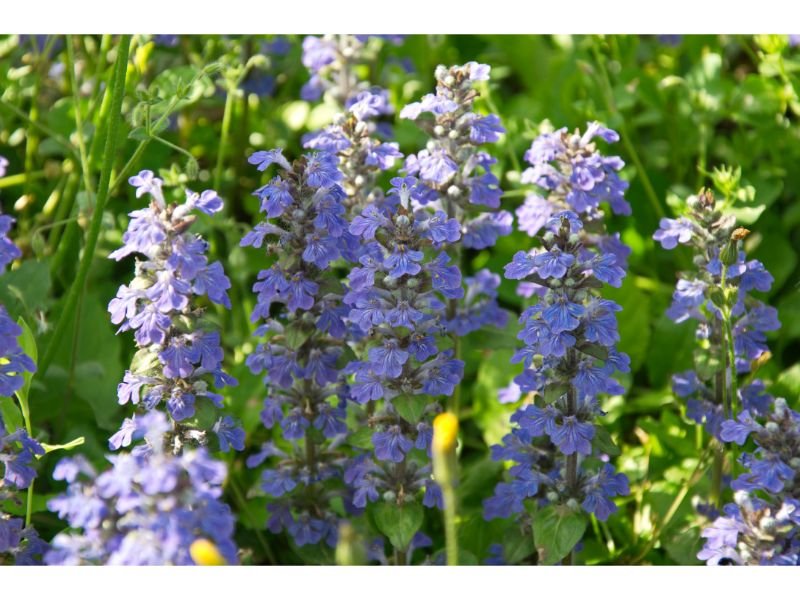
Our next crop that has purple flowers is the cultivated species of the common ajuga reptans. As the name states, the ‘purple torch’ ajuga reptans have a spike of individual lavender-colored blooms. They thrive well under all light conditions, whether it’s under dappled sunlight or direct full sun.
6. Purple Bee Balm
Scientific name: Monarda
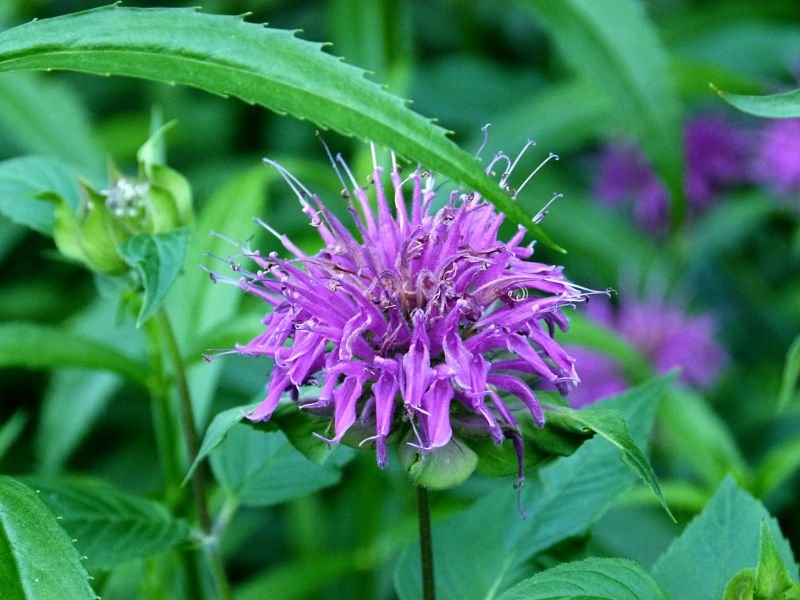
Also known as monarda, purple bee balm is a perennial flowering plant native to North America. Purple bee balm’s blooms emit a fragrance smell and they are relatively easy to maintain. One of the best choices for pollinator-themed and butterfly-themed gardens, they produce oval, lanceolate foliage with groups of individual, small, tubular blooms and stamens.
7. Scottish Heather
Scientific name: Calluna vulgaris
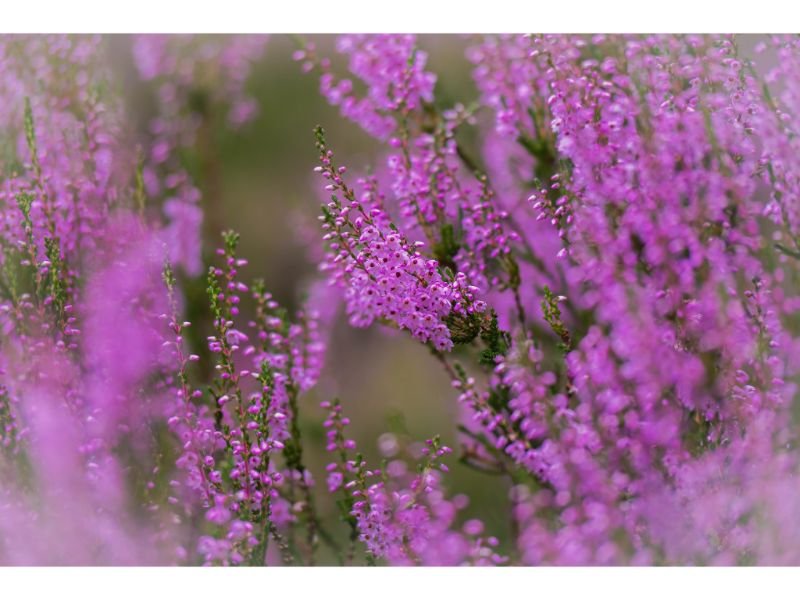
Same as the few purple crop flowers that we have mentioned before, Scottish heather produces stalks of individual tiny flowers but with upright stamens on each flower. This perennial plant is tolerant to poor-nutrient soil and is easy to grow. They mostly grow as ornamental flowering plants.
8. Hyacinths
Scientific name: Hyacinthus orientalis
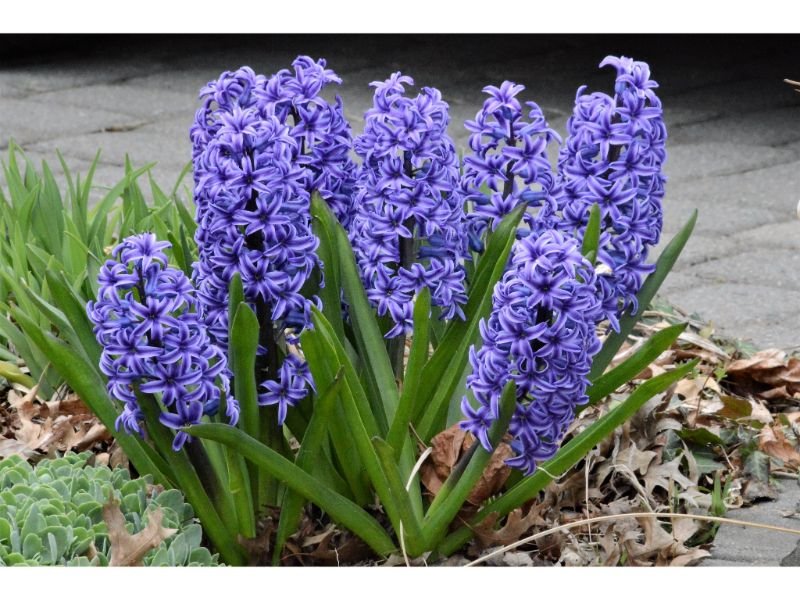
Hyacinths are bulbous, perennial, and poisonous flowering plants that originated from Mediterranea, Southern Turkey, and Europe. Aside from massive areas like croplands, they also thrive well in much smaller spaces like containers and outdoor home gardens. They don’t require much to grow–as long as you provide them with nutrient-rich soil with good drainage and full direct sun.
9. Japanese Iris
Scientific name: Iris ensata
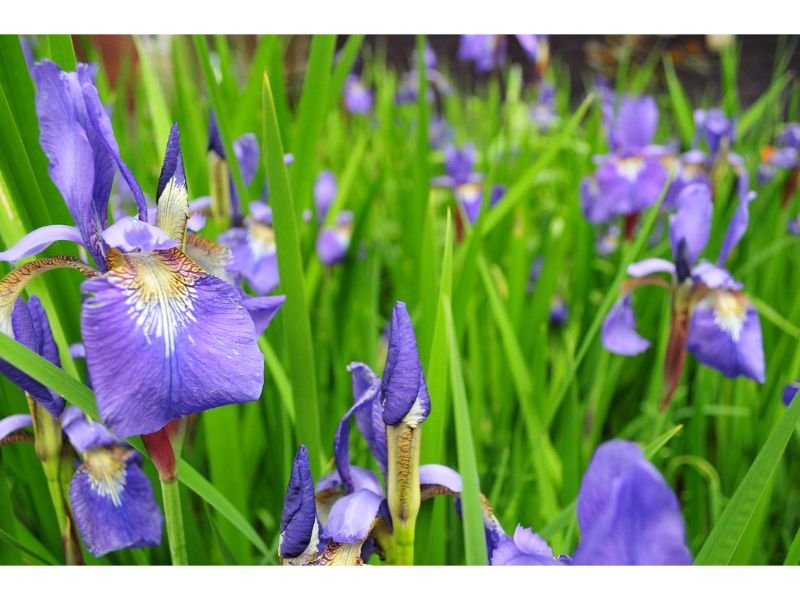
Japanese iris is a perennial flower from the iris or Iridaceae Family. What’s unique about this plant is that they also thrive well in aquatic areas like ponds and their native habitat, Japanese iris is often grown in a shrine as a symbol of wisdom and trust. You can grow them in a crop that has purple flowers along with many companion plants, such as tulips and roses, to make a glorious-looking flower-path garden.
10.’Blazing Stars’ Liatris
Scientific name: Liatris

‘Blazing stars’ is a perennial flowering plant from the Asteraceae or aster family. They grow a group of tiny, spiky head flowers in a group of individual stalks. The center part color of each bloom varied, depending on which species. ‘Blazing stars’ are mostly grown for their visually appealing value, as well as flowers to attract pollinators.
11. Gulf Muhly Grass
Scientific name: Muhlenbergia sericea

If you are looking for purple grass as an addition to your crop that has purple flowers, you can grow gulf muhly grass. This perennial, ornamental grass is a part of the Poaceae Family. In their natural habitat, they have a significant value for pollinators and small mammals for being a food source and for nesting areas.
12. Creeping Phlox
Scientific name: Phlox subulata
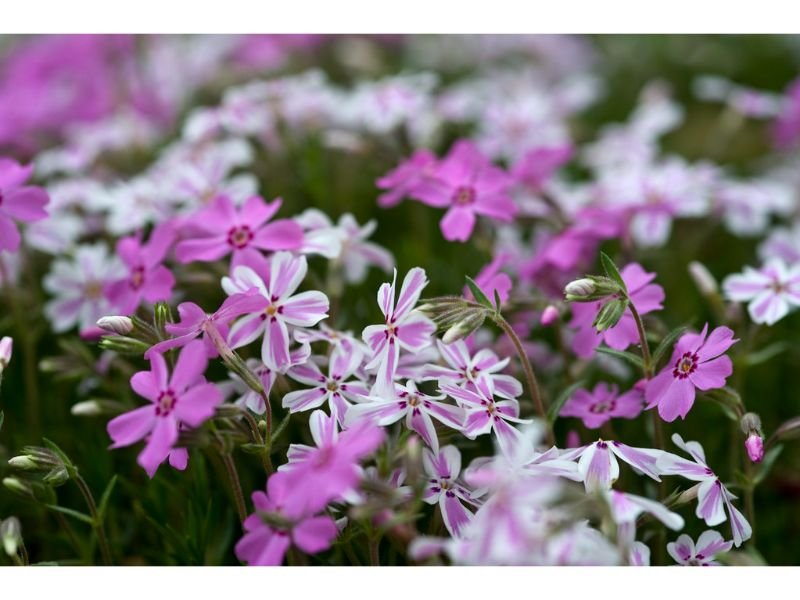
Lastly, a crop that has purple flowers is creeping phlox. Because of their growth habit, this perennial flowering plant is also known as flowering moss or ‘ground pink’, since they cover the ground, just like moss, with their fast-growing and fragrant tubular blooms. They thrive well both in large and small growing areas.
13. Phacelia

Phacelia (Phacelia tanacetifolia) is a plant that is often used as a cover crop in agricultural settings. It is a native Californian annual forb that is used as a nitrogen catch crop in the Salinas Valley. Phacelia has beautiful purple flowers that attract insects for pollination and has additional cover crop benefits including providing organic matter.
In the UK, phacelia is used as a brood-rearing crop. It is a quick-growing native annual wildflower that is a small but mighty pollinator attractor. While phacelia is not a common crop, it is used as a cover crop in agricultural settings and can be grown in gardens for its attractive purple flowers.
14. Purple deadnettle
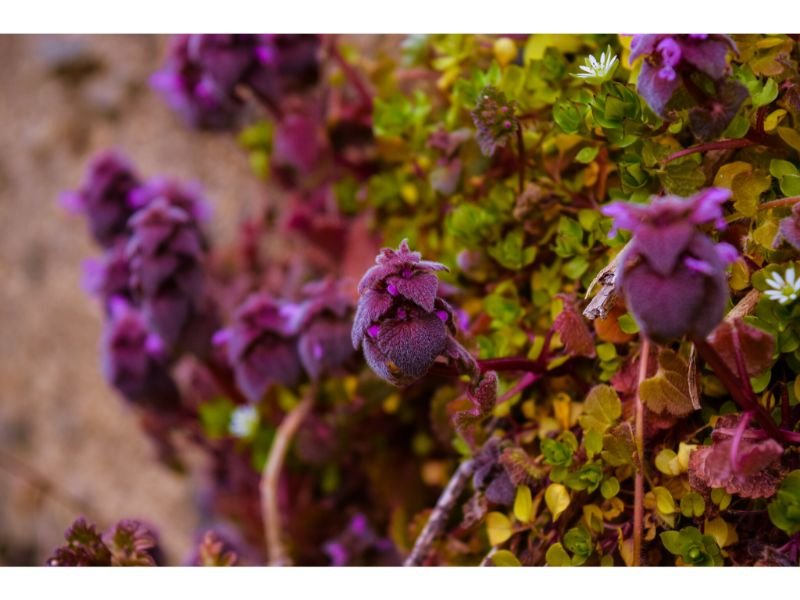
Purple deadnettle (Lamium purpureum) is a weed that is commonly found in fields and disturbed areas. It has purple flowers and is often confused with henbit, another weed with purple flowers. While purple deadnettle is not typically grown as a crop, it can grow in agricultural fields and compete with crops for resources.
Purple deadnettle (Lamium purpureum) is a common weed that has several benefits and uses. Here are some of the benefits of purple deadnettle:
- Nutritional Benefits: Purple deadnettle is rich in vitamins and minerals, including vitamin C, vitamin A, vitamin K, iron, and fiber. Incorporating it into your diet can provide these nutritional benefits.
- Medicinal Uses: Purple deadnettle has been used for centuries in traditional medicine. It can be used topically to create salves, tinctures, and teas to help with various ailments. The plant’s antibacterial and antifungal properties make it useful for treating minor cuts, wounds, rashes, and skin infections.
- Anti-Inflammatory Properties: Externally, purple deadnettle has anti-inflammatory properties, making it beneficial for relieving aches and pains.
- Antimicrobial Properties: Purple deadnettle has antimicrobial properties, which can be helpful in first aid applications and promote overall skin health.
- Wildlife Attraction: Purple deadnettle is a valuable plant for pollinators, particularly bumblebees6. Allowing it to grow in your garden can help support pollinator populations.
While purple deadnettle is considered a weed and not typically grown as a crop, it offers nutritional and medicinal benefits and can be a valuable addition to your garden or used in various applications.
What are the benefits of planting crops with purple flowers?
Planting crops with purple flowers can offer several benefits:
Attracting pollinators
Purple flowers are often highly attractive to bees, butterflies, and other pollinators. The color purple acts as a guide for pollinators, leading them toward the reproductive structures of the flower, and increasing the chances of pollination. This can be beneficial for crop production as it enhances pollination and increases the yield of fruits and seeds.
Enhancing biodiversity
Planting crops with purple flowers can contribute to biodiversity in agricultural landscapes. By attracting a diverse range of pollinators, these crops can support a healthier ecosystem and promote the presence of beneficial insects that can help control pests.
Aesthetically pleasing
Purple flowers can add beauty and visual interest to gardens and landscapes. They can create striking color combinations when paired with other plants, adding depth and elegance to garden schemes.
Health benefits
Some studies suggest that purple plants, including those with purple flowers, contain antioxidants that have potential health benefits. These antioxidants may help prevent diseases and enhance overall wellness.
Seed dispersal
In some cases, the color purple can attract herbivores that consume the seeds or fruits of plants. These herbivores then deposit the seeds elsewhere, aiding in seed dispersal and helping the species spread across the landscape.
It’s important to note that the specific benefits of planting crops with purple flowers may vary depending on the crop species and the local ecosystem. Nonetheless, incorporating crops with purple flowers can contribute to a more vibrant and sustainable agricultural environment.
Wrap-up.
To conclude, you can play with these purple flowers to leave a stunning crop that you will enjoy all seasons. You can mix them with red, yellow, orange, or pink perennial or annual blooms to build your astounding crop of flowers. Hope this article about a crop that has purple flowers helps. Happy Gardening!

New author in the hood. Loves gardening and flowers are my spirit animals (yes I know they are not animals but I insist). I will be covering most of the flowers’ topics here and occasionally random though as well.

